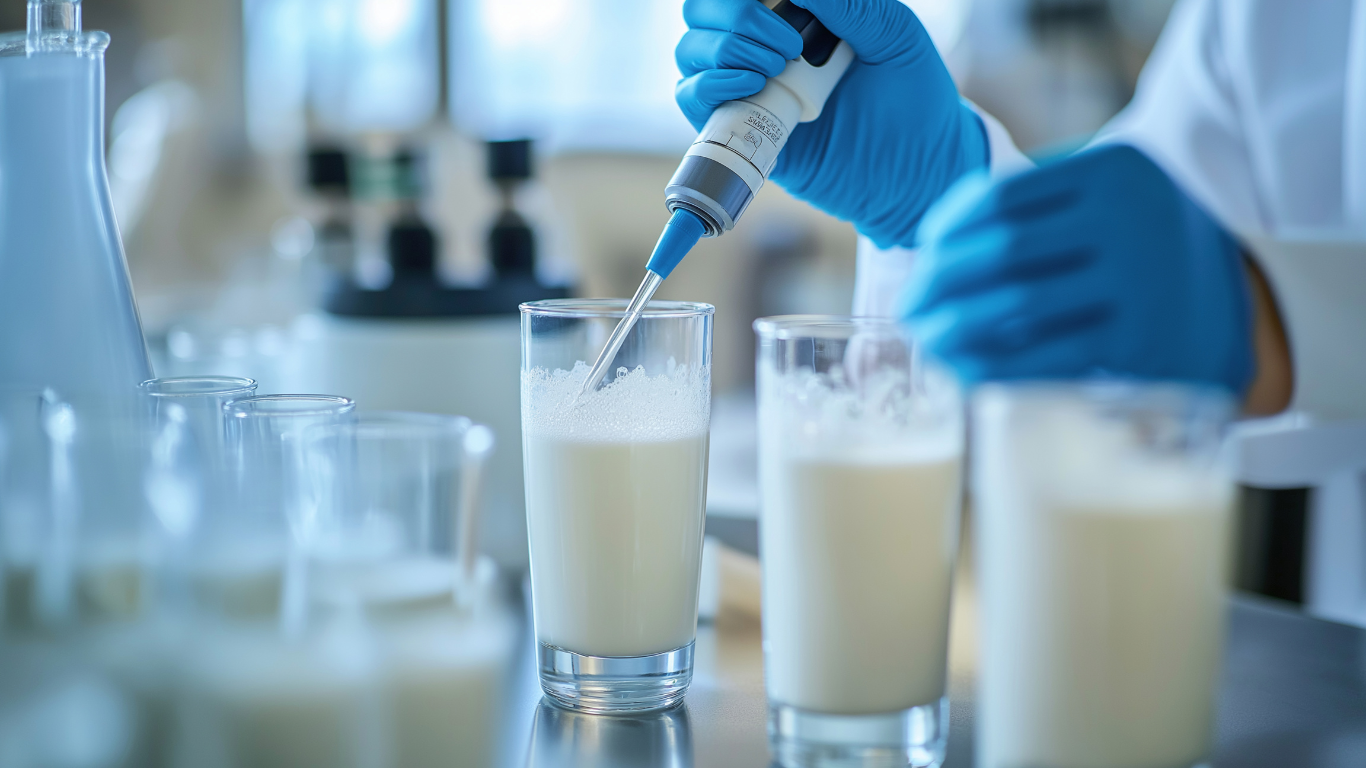
Aflatoxins in Milk: Causes, Effects, and How to Keep Your Milk Safe
Introduction: Protecting Your Milk, Protecting Your Health
A glass of milk is more than just a drink
A glass of milk is more than just a drink — it’s a daily dose of nutrition, energy, and comfort. But what if your milk could contain something you can’t see, smell, or taste? One such hidden risk is aflatoxin — a naturally occurring toxin that can find its way into milk through contaminated animal feed.
Before you worry, here’s the good news: with proper storage, hygienic practices, and professional testing from a NABL accredited, FSSAI Certified food testing lab like SKAS Lab, you can keep your milk safe and your customers confident. Our expertise in food safety and standards, food microbiological testing, and food allergy testing ensures your dairy products meet the highest quality requirements.
In this blog, we’ll break down what aflatoxins are, how they get into milk, why they’re a concern, and most importantly, how you can prevent them through advanced food laboratory methods and testing milk for adulteration.
What Are Aflatoxins and How Do They Get into Milk?
Aflatoxins are toxins produced by certain fungi — mainly Aspergillus flavus and Aspergillus parasiticus. These fungi thrive in warm, humid environments and can grow in animal feed like maize, groundnuts, and other grains if stored improperly.
When dairy cows eat contaminated feed, aflatoxin B1 gets converted inside their bodies into aflatoxin M1, which passes into their milk.
Example: Even if feed looks fine, it might still carry toxins. That’s why regular feed testing and food microbiological analysis are crucial for dairy farmers committed to food safety and standards compliance.
Why Aflatoxins Are a Concern
The International Agency for Research on Cancer (IARC) classifies aflatoxins as Group 1 carcinogens. While small, occasional exposure may not cause immediate symptoms, continuous exposure can lead to:
- Liver damage and increased risk of liver cancer
- Weakened immune system
- Growth retardation in children
- Aggravated food allergies in sensitive individuals
Case in point: In 2019, certain milk batches in South Asia were recalled after food laboratory testing revealed excessive aflatoxin levels — causing public concern and heavy financial losses for producers.
Signs Your Milk May Be at Risk
You cannot detect aflatoxins by taste, smell, or sight. However, the following factors increase the chances of contamination:
- Sourcing milk from cattle fed old or damp feed
- Operating in regions with high humidity and poor feed storage facilities
- Frequent livestock health issues linked to poor diet quality and lack of food microbiological testing
How to Prevent Aflatoxin Contamination in Milk
1. Keep Feed Quality High
- Store animal feed in dry, well-ventilated areas
- Avoid feed that is damp, clumpy, or old
- Test feed regularly for fungal contamination through a certified food laboratory
2. Test Milk Consistently
- Work with a NABL accredited, FSSAI Certified food testing lab like SKAS Lab
- Include milk adulteration tests, food allergy testing, and food microbiological screening in your quality process
- Make testing milk for adulteration a routine part of your quality control plan
3. Maintain Clean Equipment
- Use stainless steel milk storage containers
- Clean and sanitise milking machines regularly
- Keep milk stored at recommended cold temperatures to maintain food safety and standards compliance
4. Follow Food Safety Regulations
- Adhere to FSSAI guidelines and keep documentation ready for audits
- Partner with certified experts in food safety and standards to avoid penalties
Success story: A dairy cooperative in Maharashtra reduced contamination risk by introducing quarterly food laboratory testing with NABL accredited, FSSAI Certified SKAS Lab. Within six months, customer complaints about milk quality dropped to zero.
Why SKAS Lab is the Right Partner
When it comes to milk safety, you need more than just testing — you need trusted certification.
- NABL accredited — meeting the highest technical and quality benchmarks for food microbiological testing
- FSSAI Certified — authorised to conduct food safety and standards checks
- Equipped for advanced food allergy testing and testing milk for adulteration
- Staffed with expert technicians in food laboratory analysis
With SKAS Lab, you can be confident your milk meets national and international safety requirements.
Final Thoughts
Aflatoxins may be invisible, but so is the peace of mind you get when your milk is tested and safe. By combining good storage practices, hygienic handling, and professional food laboratory services from SKAS Lab, you can protect your consumers, your brand, and your bottom line.
Bottom line: Don’t guess — test with a NABL accredited, FSSAI Certified lab for all food safety and standards requirements.
FAQs on Aflatoxins in Milk
- What are aflatoxins?
Aflatoxins are toxins produced by fungi that can contaminate animal feed and pass into milk, making testing milk for adulteration essential.
- How do aflatoxins get into milk?
They enter when dairy cattle consume mouldy feed contaminated with aflatoxin-producing fungi, which is why food microbiological checks are important.
- Can boiling milk remove aflatoxins?
No — aflatoxins are heat-stable and cannot be removed by boiling or pasteurisation, making food laboratory testing the safest option.
- How can I prevent aflatoxin contamination?
Use fresh, dry feed, maintain hygiene, and test milk regularly at a certified food laboratory for food allergy testing and testing milk for adulteration.
- Who sets permissible limits for aflatoxins in milk?
The FSSAI sets permissible limits in India under food safety and standards regulations.
- Where can I get my milk tested?
You can contact SKAS Lab — NABL accredited, FSSAI Certified, and experienced in food safety and standards, food microbiological analysis, and food allergy testing. Connect with us on Facebook, LinkedIn, and Instagram.
